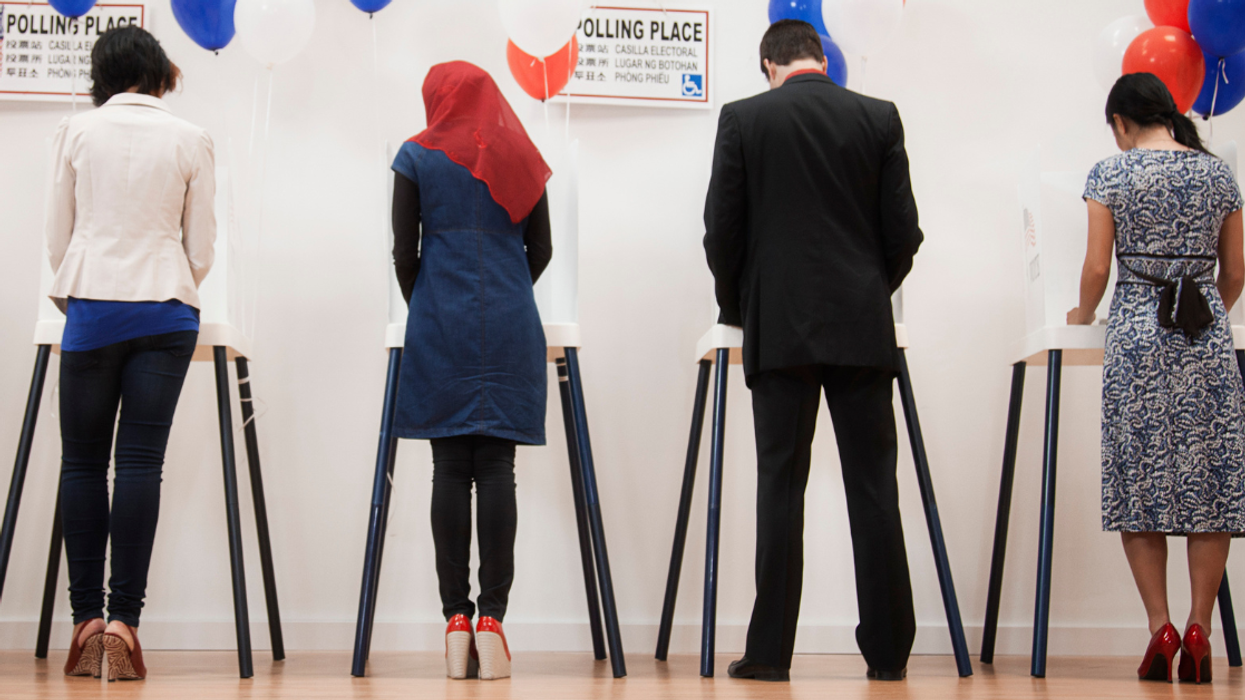It started with the Kansas shocker.
An amendment that would have removed abortion as a right from that state’s constitution, put on the primary day ballot intentionally by conservatives with the hope that traditional partisan turnout would lift it to victory, went down to a resounding defeat, with 59 percent “no” and 41 percent “yes”—all in a deep red state that Trump won decisively by 15 points.
Could the Dobbs decision have set off a national outcry, for which Kansas was only a pre-cursor? Could this be known as the #Roevember election?
Political observers took note of the surprise upset in Kansas and began to track some trends and look more closely at the polls. What they discovered has heartened pro-choice activists and Democrats while putting abortion foes and Republicans on the defense.
Let’s look at some of the data.
\u201cHow Abortion Changed the Kansas Electorate\nhttps://t.co/0LEDrlSwxA\u201d— TargetSmart (@TargetSmart) 1659544198
In Kansas Registrations among Women Spiked Pre-Election
Right before the Dobbs decision, in Kansas women and men were more or less equal in terms of their percentages of new voter registration.
But according to a study by TargetSmart, the Dobbs leak caused a gap to grow which turned into a rout after the decision was officially released, with women making some 70 percent of all new voter registrations in the state.
Female Registration in Abortion Battlegrounds Has Soared
The trend is not limited to Kansas alone, though it was most pronounced there.
\u201cNot Just Kansas; Women Motivated to Vote in States with Repro Rights at Risk\nhttps://t.co/fOGXkWjdaG\u201d— TargetSmart (@TargetSmart) 1660669216
In states where abortion rights are threatened, such as Michigan and Wisconsin, where there are archaic laws on the books that extremist GOP state lawmakers are seeking to resurrect post-Dobbs, and where right-wing statewide candidates for office have pressed for total abortion bans, women are out-registering men by sizeable margins.
But where there is no threat to abortion rights, such as in New York and Rhode Island, that gap disappears.
Diving into the numbers more deeply and looking at the partisan spread it is fueling, TargetSmart noted that since the release of the Dobbs decision on June 24, 2022, in Wisconsin “Democrats make up 52.36% of all of those newly registered voters, compared with 16.59% of new voters registering as Republicans.”
And in Michigan, “Among the 12,879 new voters that have registered since the Dobbs decision…Democrats are out-registering Republicans by 18 percentage points.”
The take away? In the coming weeks, and especially after Labor Day, Democrats should lean into these numbers and focus efforts on new voter registrations, especially in the swing states where abortion rights are on the ballot.
How Might This Affect Control of the Senate?
Recent polls in key senate races have confirmed that the Democratic candidates are building a far stronger position than many observers earlier had expected. The traditional thinking was that Democrats would be swamped by Biden’s lagging approval ratings, high inflation, and a wobbly economy.
While those factors still weigh heavily, the GOP is having its own set of problems, having fielded extremist candidates who are trailing their opponents in raising funds and who continue to commit unforced errors.
“Poll of polls” such as FiveThirtyEight have shifted their predictions for control of the Senate sharply to the Democrats in recent days following a slate of polls that brought bad news to GOP candidates across the board, with its models showing the Democrats will retain control of the chamber 63 percent of the time, up from 51 percent only weeks ago.
In each of the four Democratic-held seats targeted by the GOP (New Hampshire, Nevada, Arizona and Georgia) polls now show the incumbent Democrats ahead of their challengers. The senate polls look particularly bad in Arizona, where Mark Kelly is polling eight points above Blake Masters, who once favored abortion rights but now supports a nationwide ban and a “federal personhood law” for fetuses.
Even more troubling for Mitch McConnell and the GOP senate leadership are the numbers out of Wisconsin and Pennsylvania. In the Badger State, incumbent Ron Johnson, who has a 47 percent unfavorable rating, is trailing his opponent Lt. Governor Mandela Barnes by seven points.
These numbers are particularly stark among independents, who favor Barnes by 14 points. Johnson recently came under fire for downplaying the threat of the loss of abortion rights in his state. “It might be a little messy for some people, but abortion is not going away,” he said, saying that driving across state lines to Illinois would likely be an option.
“I just don’t think this is going to be the big political issue everybody thinks it is, because it’s not going to be that big a change.” He appears to be very wrong on this point.
In the Keystone State, Dr. Mehmet Oz, who already seems out-of-touch with his recent comments about his 10 houses and with his disastrous shopping trip to “Wegmer’s” (he meant either Wegman’s or Redner’s,) for “crudités” (he meant “veggie platter”), is down by 11 points to the popular and affable Lt. Gov. John Fetterman.
Oz’s position on abortion isn’t helping. According to PolitiFact, Oz supported the overturning of Roe and favors states setting their own abortion policies. That has real ramifications in Pennsylvania, where extremist GOP gubernatorial candidate Doug Mastriano could sign abortion restrictions enacted by the Republican controlled legislature if elected.
While these numbers easily could shift in the time between now and the election, they could just as conceivably also accelerate.
The GOP has signaled strongly that it presently sees its position as weak, pulling $10 million in ad spends of the airways in Arizona, Wisconsin and Pennsylvania and instead rushing $28 million in ad blitz dollars to deeply red Ohio, where Democratic Congressman Tim Ryan is in a surprising dead heat with Trump-backed J.D. Vance in the senate race there.
Vance’s extremist positions include abortion, and he has drawn fire for calling rape “inconvenient” and compared abortion to slavery.
If that weren’t enough of a headache for the GOP, in North Carolina and in Florida, two states won by Trump in 2020, the female Democratic candidates for senator, state supreme court justice Cheri Beasley and Rep. Val Demings, are neck-and-neck with their male Republican opponents, with abortion rights agagin front and center in their race.
Whether the momentum will continue to build around abortion rights this fall, or it will drop off as other issues such as the economy or border security are highlighted by Republicans, remains to be seen.
And even if the #Roevember momentum is significant enough for statewide races to tip to the Democrats, it may not be enough to retain control of the House on a map that is gerrymandered in the Republicans’ favor.
For Democrats to retain control of both chambers of Congress will require a blue wave that few ever considered a possibility, at least until the Kansas election demonstrated the power of abortion rights as a motivating issue.







 @vanessa_p_44/TikTok
@vanessa_p_44/TikTok @vanessa_p_44/TikTok
@vanessa_p_44/TikTok @vanessa_p_44/TikTok
@vanessa_p_44/TikTok @vanessa_p_44/TikTok
@vanessa_p_44/TikTok @vanessa_p_44/TikTok
@vanessa_p_44/TikTok










 @GovPressOffice/X
@GovPressOffice/X @GovPressOffice/X
@GovPressOffice/X @GovPressOffice/X
@GovPressOffice/X @GovPressOffice/X
@GovPressOffice/X

 mass.gov
mass.gov cdss.ca.gov
cdss.ca.gov
 Sad Break Up GIF by Ordinary Frends
Sad Break Up GIF by Ordinary Frends  so what who cares tv show GIF
so what who cares tv show GIF  Iron Man Eye Roll GIF
Iron Man Eye Roll GIF  Angry Fight GIF by Bombay Softwares
Angry Fight GIF by Bombay Softwares